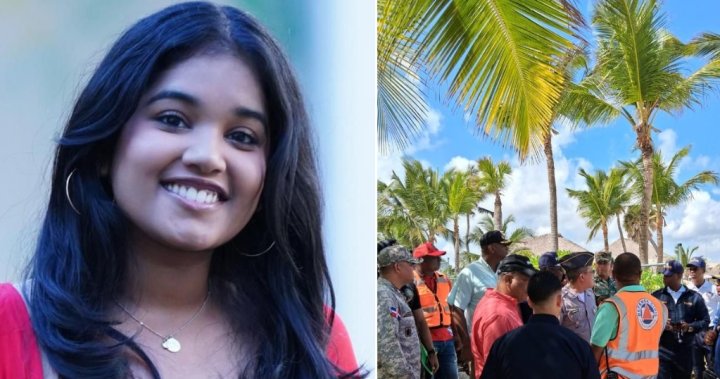DUBAI, United Arab Emirates — Iran has responded to a letter sent by U.S. President Donald Trump to its supreme leader in an attempt to jump-start talks over Tehran's rapidly advancing nuclear program, rejecting the option of direct talks.
The decision by Tehran leaves open the possibility of indirect talks with Washington. However, such talks have made no progress since Trump in his first term unilaterally withdrew the U.S. from Tehran’s nuclear deal with world powers in 2018.
Trump has threatened new sanctions on Iran as part of his “maximum pressure” campaign targeting the country. He also again suggested military action against Iran remained a possibility, while emphasizing he still believed a new deal could be reached.
Iran's 85-year-old Supreme Leader Ayatollah Ali Khamenei on Monday warned Iran would respond to any attack with an attack of its own.
Here's what to know about the letter, Iran's nuclear program and the overall tensions that have stalked relations between Tehran and Washington since the 1979 Islamic Revolution.
Why did Trump write the letter?
Trump dispatched the letter to Khamenei on March 5, then gave a television interview the next day in which he acknowledged sending it. He said: “I’ve written them a letter saying, ‘I hope you’re going to negotiate because if we have to go in militarily, it’s going to be a terrible thing.’” Since returning to the White House, the president has been pushing for talks while simultaneously ratcheting up sanctions and suggesting a military strike by Israel or the U.S. could target Iranian nuclear sites.
A previous letter from Trump during his first term drew an angry retort from the supreme leader.
But Trump’s letters to North Korean leader Kim Jong Un in his first term led to face-to-face meetings, though no deals to limit Pyongyang’s atomic bombs and a missile program capable of reaching the continental U.S.
How has Iran reacted?
On Sunday, Iranian President Masoud Pezeshkian rejected direct negotiations with the United States over Tehran's rapidly advancing nuclear program.
“We don’t avoid talks; it’s the breach of promises that has caused issues for us so far,” Pezeshkian said in televised remarks during a Cabinet meeting. “They must prove that they can build trust.”
On Monday, Khamenei seemingly reacted to comments by Trump renewing his threat of military action.
“They threaten to commit acts of mischief, but we are not entirely certain that such actions will take place,” the supreme leader said. “We do not consider it highly likely that trouble will come from the outside. However, if it does, they will undoubtedly face a strong retaliatory strike.”
Iranian Foreign Ministry spokesperson Esmail Baghaei went even further.
“An open threat of ‘bombing’ by a Head of State against Iran is a shocking affront to the very essence of International Peace and Security,” he wrote on the social platform X. “Violence breeds violence, peace begets peace. The US can choose the course...; and concede to CONSEQUENCES.”
Why does Iran's nuclear program worry the West?
Iran has insisted for decades that its nuclear program is peaceful. However, its officials increasingly threaten to pursue a nuclear weapon. Iran now enriches uranium to near weapons-grade levels of 60%, the only country in the world without a nuclear weapons program to do so.
Under the original 2015 nuclear deal, Iran was allowed to enrich uranium only up to 3.67% purity and to maintain a uranium stockpile of 300 kilograms (661 pounds). The last report by the International Atomic Energy Agency on Iran’s program put its stockpile at 8,294.4 kilograms (18,286 pounds) as it enriches a fraction of it to 60% purity.
U.S. intelligence agencies assess that Iran has yet to begin a weapons program, but has “undertaken activities that better position it to produce a nuclear device, if it chooses to do so.”
Why are relations so bad between Iran and the U.S.?
Iran was once one of the U.S.'s top allies in the Mideast under Shah Mohammad Reza Pahlavi, who purchased American military weapons and allowed CIA technicians to run secret listening posts monitoring the neighboring Soviet Union. The CIA had fomented a 1953 coup that cemented the shah's rule.
But in January 1979, the shah, fatally ill with cancer, fled Iran as mass demonstrations swelled against his rule. The Islamic Revolution followed, led by Grand Ayatollah Ruhollah Khomeini, and created Iran's theocratic government.
Later that year, university students overran the U.S. Embassy in Tehran, seeking the shah's extradition and sparking the 444-day hostage crisis that saw diplomatic relations between Iran and the U.S. severed. The Iran-Iraq war of the 1980s saw the U.S. back Saddam Hussein. The “Tanker War” during that conflict saw the U.S. launch a one-day assault that crippled Iran at sea, while the U.S. later shot down an Iranian commercial airliner.
Iran and the U.S. have see-sawed between enmity and grudging diplomacy in the years since, with relations peaking when Tehran made a 2015 nuclear deal with world powers. But Trump unilaterally withdrew America from the accord, sparking years of tensions in the Mideast that persist today.
___
Associated Press writer Amir Vahdat in Tehran, Iran, contributed.











 English (US) ·
English (US) ·